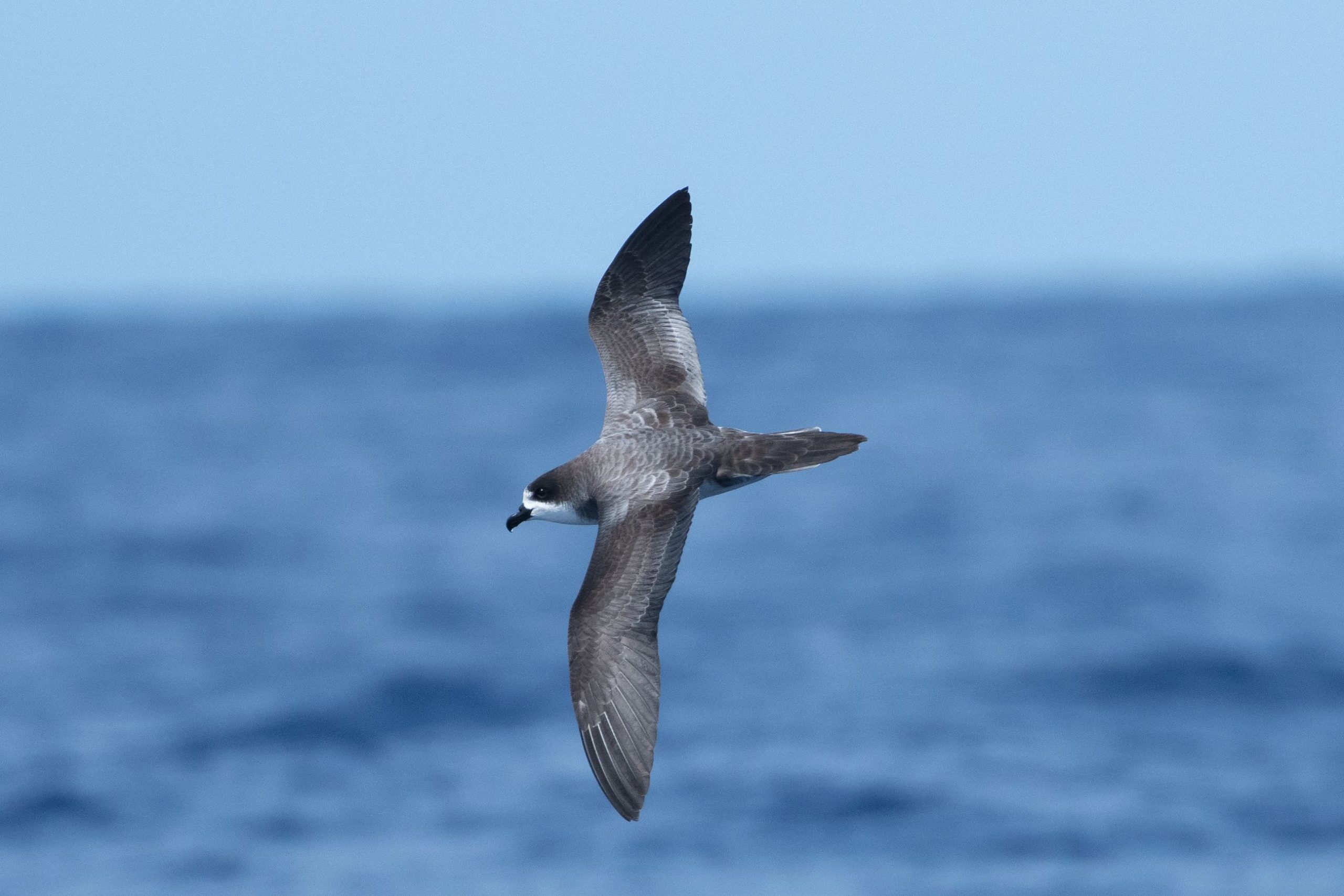09/19/23-ON THE TRAIL OF THE ELUSIVE ‘AKĒ‘AKĒ
Posted on Sep 19, 2023 in Forestry & Wildlife, Main, Media, News Releases, slider
| JOSH GREEN, M.D. GOVERNOR |
DAWN CHANG |
FOR IMMEDIATE RELEASE
September 19, 2023
ON THE TRAIL OF THE ELUSIVE ‘AKĒ‘AKĒ
First nesting burrow discovered on state-managed land
To view video please click on photo
(MAUNA LOA FOREST RESERVE, HAWAI‘I ISLAND) — For seven years, Alex Wang, Wildlife Biologist with the DLNR’s Division of Forestry and Wildlife (DOFAW), has searched for signs of the band-rumped storm-petrel, or ‘akē‘akē, nesting on Hawai‘i Island. After a long process of night surveys requiring patience, method refinement, and a generous dose of resolve, that day finally arrived in July.
The cryptic, nocturnal seabird species is native to Hawai‘i and inhabits remote areas of our state, with the vast majority likely breeding on Kaua‘i. Though the storm-petrel is widespread across the Pacific and Atlantic Oceans with numbers estimated at 150,000, the Hawaiian population is small, maybe fewer than 250 pairs. It is listed as Critically Endangered. As Wang and a group of fellow Hawai‘i Island biologists have learned, it is challenging to locate and estimate the population size of the smallest and rarest seabird species to breed in Hawai‘i.
“I’m super excited to finally confirm a burrow, because ‘akē‘akē aren’t the easiest to track,” said Wang. “Investing so much time and energy, to get proof is a relief. It’s been a long time coming.”
Prior to the recent discovery, only four other nesting sites have been confirmed in the state. Part of the challenge of tracking the species is their furtive behavior. On Hawai‘i Island, these birds nest in high-elevation burrows and crevices on barren lava flows, often in burrow complexes with multiple entrances and exits.
‘Akē‘akē also leave their burrows before first light, spend the entire day, or multiple days at sea, and return only after dark. And, unlike their larger cousins, the Hawaiian Petrel or ʻUaʻu, who leave guano just outside their own burrows making detection easier, ‘akē‘akē offer no such assistance.
Steps taken to determine their presence at the Mauna Loa Forest Reserve include the use of infrared thermal binoculars, remote acoustic recorders called song meters, night vision equipment, and motion-activated game cameras that canvas the lava flows for nightly bird activity. In addition to these tools, special ‘akē‘akē detection dogs were brought onboard to pinpoint potential nests. The addition of the dogs, Slater and Ikaika, and biologist/trainer Michelle Reynolds to the team, offered a complementary and welcome boost to the search effort.
“The detection dogs are game changers,” said Wang. “They’ve made the search much more feasible. Each time we take them out, we uncover more potential burrows. It’s a big step.”
Ecological detection dogs are trained similarly to dogs used in law enforcement. The dogs get imprinted on an odor, are reinforced to associate that odor through a primary reward and use their keen sense of smell to locate the scent.
“One of the most fantastic things about dog olfaction is their ability to navigate,” Reynolds said. “It’s not that they can just smell it, they can find it.” She added that it’s more of a game than an obedience activity for the dogs. More fun than work.
It was five-year-old Ikaika who discovered the burrow that was later confirmed by game camera images. Armed with little more than a sharp nose and an intrinsic drive for a “rewarding” job, dogs can spend hours tracking down a scent.
Reynolds acknowledged that paw protection was a concern that could hinder their search capability due to the rough, uneven surfaces of the pāhoehoe lava. She alleviated the issue by creating special lava booties constructed from motorcycle tire inner tubes. This made a potential major issue a minor one.
With the help of the detection dogs, Wang is hopeful the team can track down more petrels in the near future. Their work to find these stealthy ‘akē‘akē is important as they may be endemic and soon be recognized as a distinct species. In the meantime, he wants to defend these birds from predator threats to ensure their continued existence.
“We know these seabirds are vulnerable to invasive mammals, especially cats and mongooses,” Wang said. He hopes to add a predator-proof fence as a more secure control method to the traps and other protections to help preserve this endangered species indefinitely.
# # #
RESOURCES
(All images/video courtesy: DLNR)
HD video – On the Trail of the ‘Akē‘akē (Sept. 5, 2023):
Photographs – ‘Akē‘akē burrows at Mauna Loa Forest Reserve (Sept.5, 2023):
https://www.dropbox.com/sh/ud5p3cnj9e412j1/AAA6OaiyUseoLCRu-aLyEelka?dl=0
Media Contact:
Ryan Aguilar
Communications Specialist
(808) 587-0396
[email protected]


